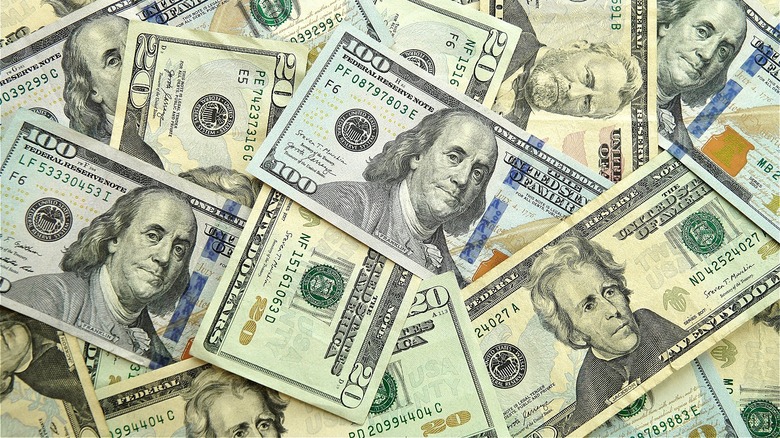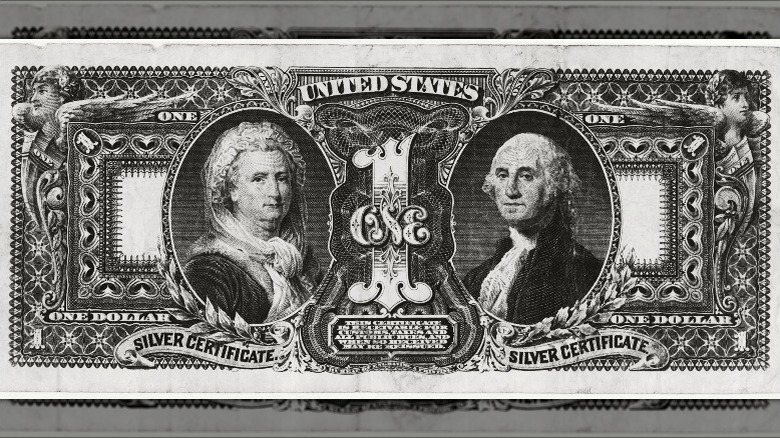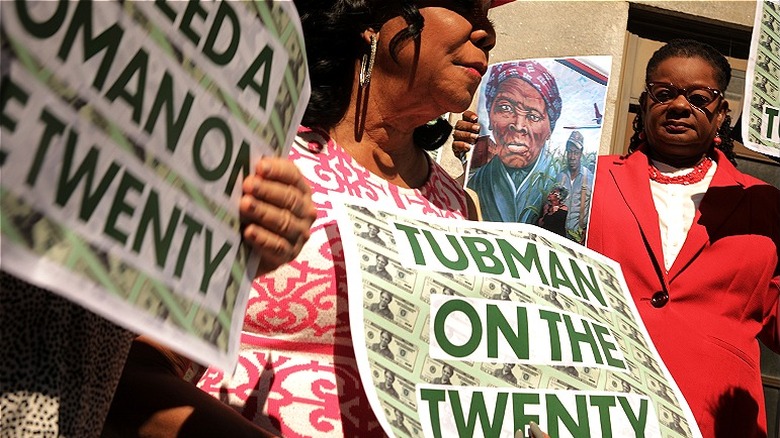Who Decides What Face Is On Bills?
At some point, we've all wondered how and why certain people appear on our money. A common misconception is that only former presidents may appear on our paper bills; however, both the $10 and $100 bills feature Founding Fathers who were never elected president (Alexander Hamilton and Benjamin Franklin), and, historically, there have been many different people featured on different United States currencies. President Obama rather famously endorsed the idea of featuring a woman on a U.S. bill, which gave rise to the movement to put Harriet Tubman on the $20 bill. However, regardless of popular opinion or presidential ideas, only the current secretary of the Treasury can select who is featured on a U.S. bill.
Given that the secretary of the Treasury and the Bureau of Engraving and Printing redesign U.S. currency every seven to 10 years (mainly for security purposes to help prevent counterfeit money), you might be surprised to learn that we haven't had any new portraits since 1929. You might also be surprised to learn that American money has themes. The Treasury, BEP, and the U.S. Secret Service work together to promote specific themes that are intended to represent the country's core values. Since 2003, the theme has been "freedom," which has been embodied through imagery like Lady Liberty's torch, eagles, and the flag. The upcoming monetary theme is expected to be "democracy" and will be incorporated along with new portraits and historical figures across several U.S. bills.
Who's been featured on US dollar bills
While we typically think of the same seven men who have been exclusively featured on American dollar bills for almost a century, you might be surprised to learn they are by no means the only ones whose portraits have graced our currency. In fact, 92 different people have appeared on some form of U.S. currency (either bills or coins). However, only five of these individuals have been women, and only one woman has ever appeared on a paper bill. The country's first first lady, Martha Washington, was the only woman awarded the honor by being featured on the 1886-issued $1 silver certificate. Also notable is that only one Native American person has ever been featured on a U.S. dollar bill, Running Antelope, who was featured on the $5 silver certificate in 1899.
While many of the featured individuals on U.S. currency have had widespread recognition, one person in particular did not. Spencer Clark, a Treasury Department employee, took advantage of a key language oversight in a congressional bill meant to memorialize William Clark (of Lewis and Clark Expedition fame). In the bill, only the name "Clark" was mentioned, so Spencer Clark seized the opportunity to place his own portrait on new 5-cent notes that appeared in 1866. In doing so, he became one of only four people to ever appear on U.S. currency while still alive and also pushed Congress to pass a bill making it so that, going forward, no one alive could legally be featured on U.S. currency again.
Featuring someone new on American money
There are actually specific guidelines for any potential currency selectee. Namely, anyone under consideration must be considered a notable and recognizable person to the American public. Also, since an Act of Congress in 1866 (Section 5114(b) of Title 31 of the U.S. Code, to be more specific), all portraits on dollar bills must belong to someone who's already deceased. This distinguishes the American dollar bill from other countries that feature living people (for instance, England featuring its current monarch). Further, remember that no new portraits have been featured on U.S. notes since the current portraits were approved in 1929; that is, until the more recent discussion surrounding adding Harriet Tubman to a bill.
Initially, Harriet Tubman was set to appear on the $10 bill; however, fueled by the popularity of Broadway musical "Hamilton," replacing the $10 bill's current resident, Alexander Hamilton, made that an unpopular choice. In 2016, the Treasury secretary at the time, Jacob J. Lew, announced that Tubman would instead replace Andrew Jackson on the $20 bill while women and civil rights leaders would be added to the backs of the $5 and $10 notes. However, despite calls to speed up the process, the changes aren't expected to actually appear on the nation's currency until sometime around 2030. With that in mind, the current Treasury secretary, Janet Yellen, confirmed that both the security and design elements of the process have moved forward and that all of the affected dollar bills (the $5, $10, $20, $50, and $100) are set to be produced between 2026 and 2034.


